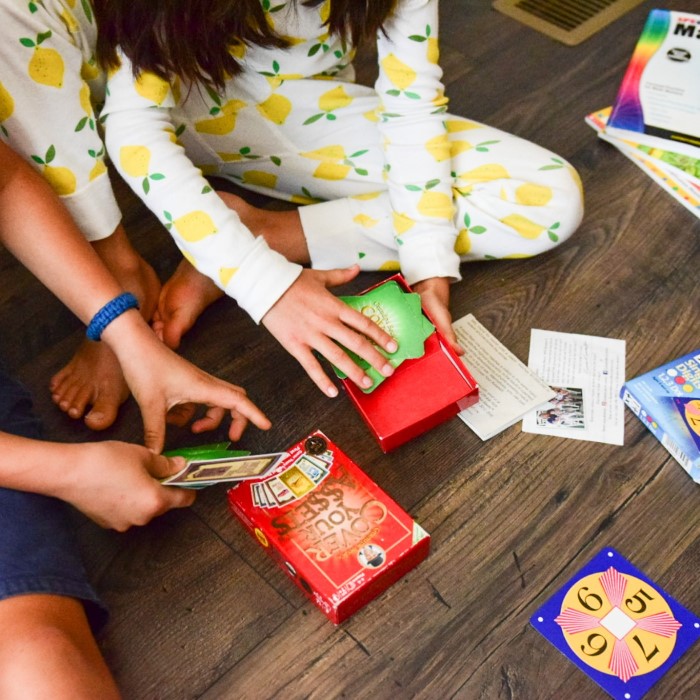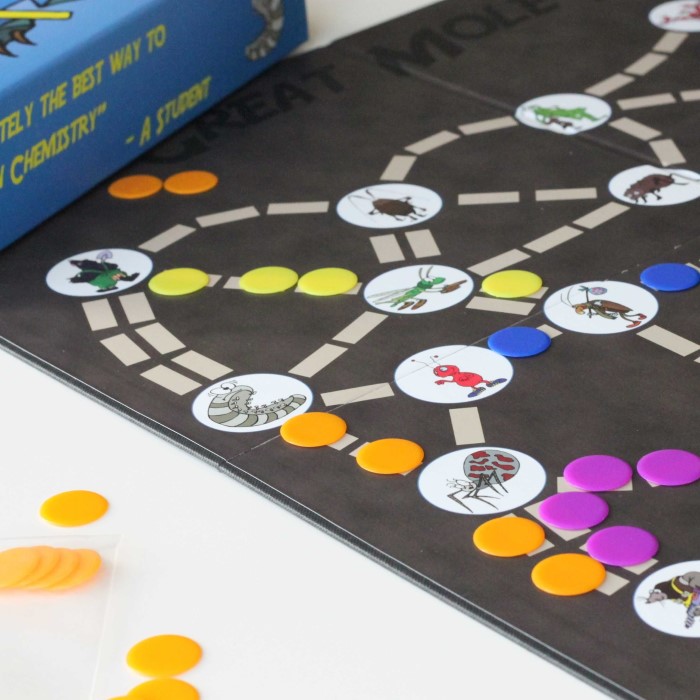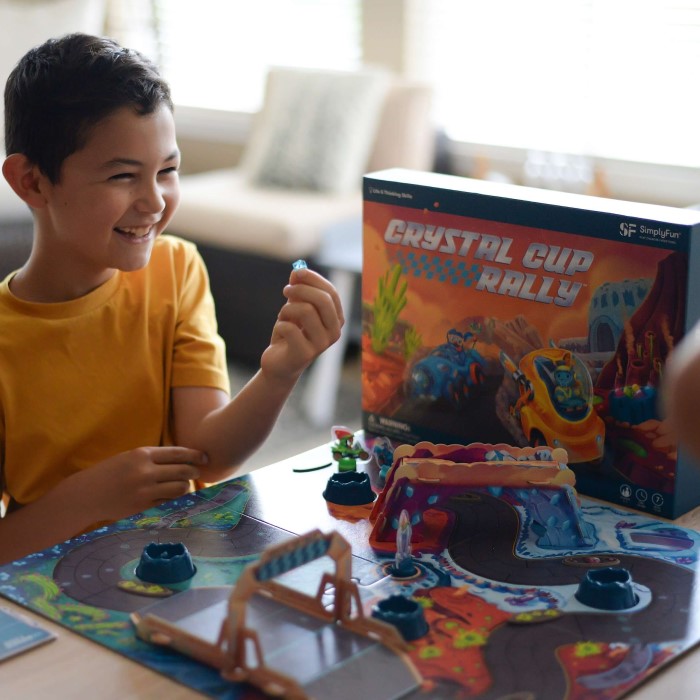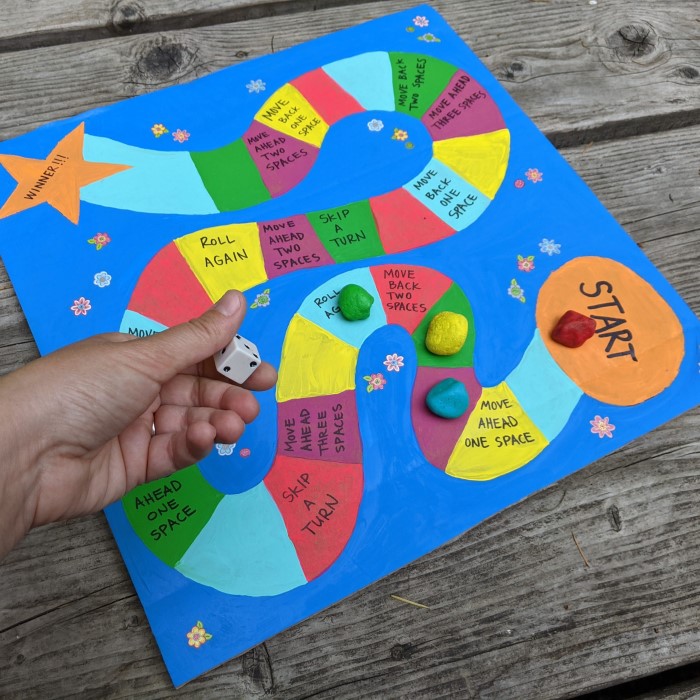Introduction
Summer is the perfect time to gather with family and friends and create lasting memories. One of the best ways to do this is through engaging and creative board game ideas. Board games bring people together, spark conversations, and create fun-filled moments. In this article, we will explore some of the most exciting and original board game ideas that you can enjoy this summer. Whether you want to tailor existing games or embark on completely new adventures, there’s something here for everyone.

Types of Board Games to Inspire Creativity
Finding the right type of board game can boost creativity. Below are some categories to explore, each offering unique experiences and fun challenges.
Strategy Games for Thoughtful Planning
Strategy games push players to think critically and plan ahead. These games often involve tactics, resource management, or territorial control. Examples include classics like Chess and modern hits like Settlers of Catan. They are perfect for players who enjoy solving problems and making calculated decisions.
Party Games for Group Entertainment
Party games are designed for big groups and focus on laughter and interaction. They usually have simple rules and fast-paced gameplay. Popular options include games like Charades, Codenames, and Cards Against Humanity. These games are ideal for gatherings and social bonding.
Cooperative Games for Teamwork Enthusiasts
Cooperative games make players work together to achieve a common goal. There’s no competing against each other—winning depends on teamwork. Examples include Pandemic, where players team up to control disease outbreaks, or Forbidden Island, where the group aims to recover treasure together. These games are great for strengthening collaboration skills.
Educational Games for Learning Through Play
Educational games mix fun and learning for players of all ages. They focus on skills like math, vocabulary, or geography. Popular choices include Scrabble and Ticket to Ride, which teach language and geography while keeping the game engaging. These games prove that learning can be both entertaining and effective.
How to Develop Unique Board Game Themes
Creating unique board game themes is essential for engaging players and making your game stand out. The theme sets the mood and inspires the overall experience. Below are three approaches to crafting memorable themes.
Combining Popular Genres for Novel Experiences
Mixing genres can breathe new life into traditional board game ideas. For example, combining strategy elements with party-style gameplay creates entertaining yet thought-provoking experiences. Blending mystery-solving with educational components can appeal to a wide audience. Think of merging cooperative play with fantastical storytelling to keep players intrigued and involved. Experimenting with different combinations allows you to create something fresh and exciting.
Drawing Inspiration from Everyday Life
Everyday life offers countless ideas for board game themes. Simple hobbies, like cooking or gardening, can inspire engaging gameplay. Social situations, such as work dynamics or family gatherings, might spark creative scenarios. Games based on real-world challenges, like budgeting or time management, can also captivate players. By tapping into relatable experiences, you create a game that resonates with your audience.
Using Historical or Fantastical Settings
Historical and fantastical settings can instantly immerse players. Historical themes, like ancient civilizations or world wars, add educational value and depth. Fantastical settings, such as magical kingdoms or sci-fi worlds, fuel imagination and escapism. Adding intricate lore to your setting enhances storytelling, creating a game that’s both memorable and exciting. Choose settings that spark curiosity and excitement among players.
Essential Components of a Fun Board Game
Creating a fun board game involves a mix of creativity, design, and engaging elements. Players seek games that are entertaining, visually captivating, and emotionally resonant. Below are three essential components to focus on when designing your board game.
Designing Engaging Game Mechanics
Game mechanics form the backbone of any board game. They define how players interact with the game and achieve objectives. Focus on creating mechanics that:
- Are easy to understand but offer strategic depth.
- Encourage player interaction, whether competitive or collaborative.
- Include a balance of luck and skill to keep things exciting.
Innovative mechanics can make your game stand out. For example, incorporating a unique way to win or introducing unexpected challenges can add freshness. Test your mechanics with diverse players to refine their appeal.
Incorporating Visually Appealing Artwork
A board game’s artwork is the first thing players notice. Great design can set the mood and draw people in. Ensure:
- The style matches the theme, whether it’s whimsical, futuristic, or historical.
- The board, cards, and pieces are visually cohesive.
- Details enhance gameplay, such as readable fonts or intuitive symbols.
High-quality illustrations and striking colors make players excited to explore the game. Professional artwork, if feasible, can significantly elevate the game’s appeal.
Creating Memorable and Relatable Characters
Characters bring your board game’s story to life. Relatable or unique figures deepen emotional connections. To craft memorable characters:
- Give them personalities that match their roles in the game.
- Include fun backstories or abilities that influence gameplay.
- Design characters with diverse traits to appeal to a broad audience.
Whether your game features heroic adventurers or witty animals, engaging characters keep players invested. Players may even identify with a favorite character, enhancing the game’s replay value.
By focusing on these components, you set the stage for a board game that captivates and entertains.
Tips for Brainstorming New Board Game Ideas
Coming up with board game ideas can be challenging but rewarding. Here are tips to spark creativity.
Starting with a Problem-Solving Concept
Begin by identifying a problem players can solve. Think of everyday challenges or intriguing mysteries. Create mechanics where players compete or collaborate to find solutions. For example, designing puzzles around resource management or survival can be engaging. Keep the problem relatable to attract more interest.
Collaborating with Friends or a Creative Team
Gather a group of creative thinkers to brainstorm ideas together. Different perspectives lead to innovative concepts. Host brainstorming sessions where everyone contributes thoughts freely. Build on each idea to refine it further. Collaboration ensures diverse ideas and quicker problem-solving during the design process.
Analyzing Trends in the Board Game Market
Research popular and trending games to understand what captivates players. Study games with unique mechanics and themes that gained success. Look at themes in high demand, like cooperative gameplay or fantasy settings. Knowing market preferences helps align your ideas with players’ interests while offering something fresh.
Prototyping and Testing Your Board Game Ideas
Creating a board game doesn’t stop at brainstorming. Prototyping and testing are crucial to refine your idea.
Building a Basic Prototype with Minimal Resources
Start simple to avoid wasting money and time. Create basic components using paper, cardboard, and markers. Design mock-ups of cards, boards, and pieces. Focus on functionality rather than aesthetics in this stage. Test the flow of mechanics to ensure playability. A basic prototype helps identify flaws early.
Conducting Player Testing and Gathering Feedback
Invite different types of players to test your prototype. Gather families, friends, and hobbyists to play. Observe how players interact with your game and note any confusion. Ask for feedback on game mechanics, balance, and enjoyment. Use surveys or informal discussions to collect actionable suggestions. Honest feedback is invaluable for refinement.
Iterating and Improving Based on Test Results
Analyze the feedback and pinpoint areas for improvement. Modify rules, layouts, or mechanics based on player responses. Test new changes with fresh players to validate them. Repeat the cycle of iterating and testing multiple times. This process ensures your board game becomes polished and engaging.
Prototyping and testing are essential for creating a fun and successful board game idea. Focus on continuous improvement to perfect your design.
Examples of Successful Board Game Concepts
Examining successful board games can inspire new and exciting ideas. Some games stand out due to their innovation, unconventional rules, or widespread acclaim. Below, we explore three key examples that highlight different paths to success.
Games That Innovated Classic Formats
Some games breathe new life into traditional formats, offering fresh twists and engaging experiences.
- Modernizing Gameplay Mechanics: Games like Dominion revolutionized deck-building by introducing strategic card management.
- Reimagining Existing Concepts: Chess variants, like 3D Chess, alter dimensions, enhancing complexity but keeping core principles.
- Cross-Genre Creativity: Combining trivia with strategy, as seen in Trivial Pursuit, attracts varied player types.
These games demonstrate how updates to established formats can create lasting appeal.
Quirky Games with Unconventional Rules
Quirky games stand out by breaking norms and embracing creativity in design and rules.
Unique Player Roles:
- Secret Roles in Gameplay: In “One Night Ultimate Werewolf,” each player is assigned a secret role at the beginning of the game. These roles vary in abilities and objectives, leading to a dynamic and unpredictable gaming experience.
- Deduction-Based Tension: The secret roles create a layer of deduction, as players must analyze the actions and statements of others to figure out their identities. This generates a tension-filled atmosphere as players engage in bluffing and reasoning to identify the werewolves among them.
- Teamwork and Strategy: Players must collaborate and share information, albeit cautiously, as everyone’s goals differ. The need for teamwork adds complexity to the game, as alliances may shift based on gameplay developments, effectively enhancing engagement.
- Replayability Factor: The variability of roles ensures that no two games are the same. Players can experience new situations and strategies in every round, making it highly replayable and appealing to diverse gaming groups.
Odd Game Themes:
- Humor in Gameplay: “Exploding Kittens” stands out for its unique theme that humorously revolves around cats and unpredictable explosions. The quirky illustrations and witty card descriptions enhance the overall enjoyment and engagement of the game.
- Fast-Paced Mechanics: The game combines strategic card play with quick decisions, requiring players to think fast. Players must navigate a deck filled with surprises and hazards, providing an adrenaline rush throughout the game.
- Unexpected Twists: The randomness of the cards introduces unexpected twists that keep players on their toes. This unpredictability contributes to the fun and excitement of the game, as players never know what will happen next.
- Appeal to Various Audiences: The combination of humor and quirky themes makes “Exploding Kittens” attractive to a broad audience, from casual gamers to families and dedicated board game enthusiasts. Its light-hearted nature paves the way for laughter and enjoyment.
Interactive Gameplay:
- Collaborative Play in “The Mind”: “The Mind” challenges players to work together to complete levels by playing cards in ascending order without verbal communication. This promotes a deep level of non-verbal interaction and cooperation.
- Silent Coordination: The silent aspect of the game requires players to read each other’s cues and instincts. This unique mechanic builds a sense of connection among participants as they attempt to anticipate each other’s actions.
- Creating Unique Experiences: The game’s focus on collaboration and shared responsibility fosters memorable moments. Players must rely on intuition and mutual understanding, creating a feeling of camaraderie that sets it apart from traditional competitive games.
- Level Progression: As players advance through levels, the challenge intensifies, requiring them to develop even deeper collaboration skills. This progression keeps gameplay exciting and encourages players to refine their strategies as they go.
These unconventional approaches often attract players looking for fun and memorable gameplay.
Award-Winning and Bestselling Board Games
Many games achieve fame through critical acclaim, sales milestones, or accolades.
- Long-Standing Success: Settlers of Catan popularized resource management and remains a bestselling classic.
- Critics’ Choice Awards: Gloomhaven won numerous awards for its immersive storytelling and deep mechanics.
- Family Favorites: Ticket to Ride is beloved for its simple rules and appeal across age groups.
These games show that combining quality design with broad appeal leads to recognition and commercial success.
Exploring these examples helps creators understand what makes board games both distinctive and popular.
Bringing Your Board Game Idea to Life
Turning your board game idea into reality requires planning and execution. Here are steps to help you.
Publishing Independently vs. Partnering with a Company
Deciding how to publish your game is crucial. Both paths have pros and cons.
- Publishing Independently:
- Offers full creative control over your design and branding.
- Requires upfront investment for production, art, and materials.
- Demands time for marketing, sales, and distribution efforts.
- Suitable for creators who value freedom and are willing to take risks.
- Partnering with a Company:
- Easier access to professional marketing, manufacturing, and distribution channels.
- Involves sharing profits and possibly compromising on creative vision.
- Companies often require clear game mechanics and market potential.
- Ideal for those seeking guidance and reduced workload.
Evaluate your goals, budget, and resources before choosing a path.
Using Crowdfunding Platforms for Visibility
Crowdfunding platforms like Kickstarter or Indiegogo can help bring your game to life.
- Why Use Crowdfunding?:
- It raises funds without traditional loans or upfront capital.
- It generates early interest and excitement around your game.
- It provides feedback directly from backers to improve your concept.
- Tips for Crowdfunding Success:
- Create a compelling campaign video that explains your game in detail.
- Offer enticing rewards, like limited-edition pieces or personalized designs.
- Set realistic funding goals that cover production, marketing, and shipping.
- Promote your campaign on social media and game forums.
Crowdfunding helps validate your idea and builds a community of early supporters.
Tips for Marketing Your Board Game Effectively
Marketing is key to making your board game popular. Focus on strategies that build awareness.
- Leverage Social Media:
- Share engaging posts, concept art, and gameplay videos regularly.
- Use platforms like Instagram, TikTok, and Twitter to target gamer communities.
- Utilize Board Game Conventions:
- Attend events like Gen Con or Essen Spiel to showcase your game.
- Host live demos to attract attendees and gather feedback.
- Collaborate with Influencers:
- Partner with board game bloggers or YouTubers for reviews or tutorials.
- Their audience can help boost your game’s visibility.
- Run Promotions or Contests:
- Offer discounts or free copies to early buyers.
- Host fan art or video-making contests for excitement.
Consistency in marketing will push your game into the spotlight and grow your fan base.
Conclusion
In conclusion, embracing board game ideas this summer can lead to memorable experiences with family and friends. From reinvented classics to creative DIY options, there’s no shortage of ways to have fun while engaging your mind. By incorporating interactive themes, technology, and thoughtful planning, you can elevate your game nights. Whether you’re revisiting old favorites or exploring new adventures, the right board games can provide endless entertainment and strengthen connections. Start planning your game nights today, and enjoy countless hours of fun this summer!








